The Icefields Parkway is one of the most scenic roads in the Canadian Rockies and links the mountain communities of Jasper and Lake Louise. In summer it’s a busy road with tourists at every viewpoint. You’ll find groups of cyclists completing the 143-mile (230 km) bike tour, and trailhead parking lots filled with backpackers and day hikers.
In the off-season, however, the parkway receives little traffic other than that from backcountry skiers heading for the area around Bow Summit, or ice climbers heading for the Weeping Wall. A handful of snowshoers may make the journey past Lake Louise on a given weekend. Or, a small portion of Calgary’s downhill skiers will make the trek to Jasper’s Marmot Basin on a Friday night after work.
The Icefields Parkway isn’t a highway where you want to run out of gas or have road problems in the middle of winter. Even driving the Parkway can be a challenge in winter between the months of November through April.
All that being said though, the Icefields Parkway is a beautiful place to explore in winter and spring. It should not be something to be scared of if you are a competent all-season driver in a winter-safe vehicle.
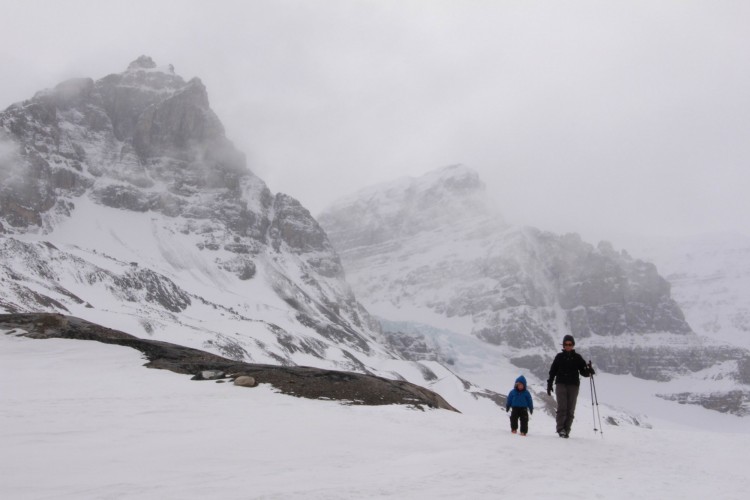
There are a plethora of beautiful trails for snowshoeing and winter hiking near the Icefields Parkway. Photo: Tanya Koob
Some of the links in this article may contain affiliate links. When you make a purchase using these links, part of the proceeds go to Snowshoe Mag. Additionally, as an Amazon Associate, we earn from qualifying purchases. Please see our disclosure for more details.
Weekend Snowshoe Adventure near Icefields Parkway
Our adventure took us from Calgary, past Lake Louise, and along the Icefields Parkway to the Hilda Creek Hostel and backcountry paradise for skiers looking for lines on nearby Parker Ridge. The hostel is located approximately 3.5 hours from Calgary and 69 miles (111 km) north of Lake Louise near Sunwapta Pass, one of the highest vehicle-accessible points in Canada.
Our weekend plans wouldn’t require skis, avalanche beacons, or shovels though. We planned to stay at Hilda Creek with another family and use the hostel as a base camp for some easy snowshoe hikes. Here’s an overview of our snowshoe weekend to inspire some ideas for your own trip near the Icefields Parkway.
Snowshoe to Peyto Lake Viewpoint
Before reaching the hostel, we stopped at Bow Summit to do the popular hike 1-mile (1.6 km) hike to the Peyto Lake viewpoint. Please note this viewpoint is currently closed for renovations and is set to re-open in August 2021.
In summer, you’d be fighting for space on the trail and even challenged to find a parking spot on a long weekend. But spring can be a different story. We didn’t see a single person on the trail or at the viewpoint. It’s the first time I’ve ever had this magnificent vista, all to myself with just friends and family.
While we weren’t able to see Peyto Lake’s beautiful aqua-blue color, the solitude was very enjoyable, and I’d do the short hike again in winter. It was the perfect distance for snowshoeing with small children such as ours, and the trail was easy.
It was well packed down, and we followed a wide summer road to within a very short distance of the viewpoint. We did run into other folks on the way down, but they were all on skis and had been up enjoying the powder that Bow Summit is famous for in winter.
Read More: Winter Activity Guide to the Best of Lake Louise, Banff National Park
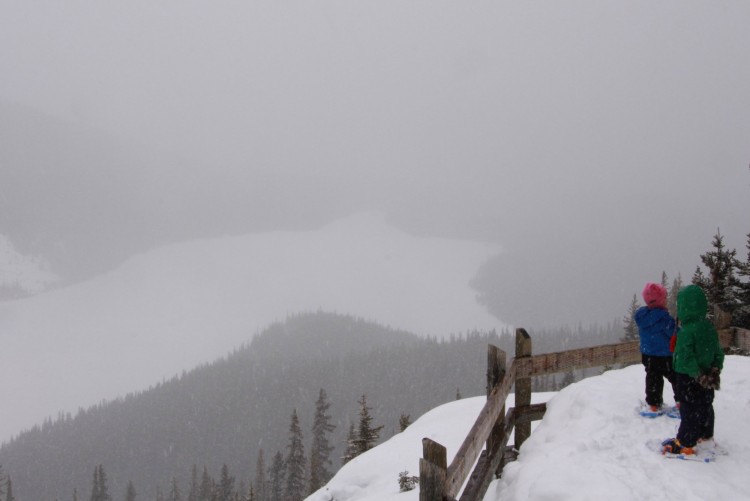
Even though we couldn’t see the aqua-blue color, the solitude of being alone was very enjoyable. Photo: Tanya Koob
Stay at Hilda Creek Wilderness Hostel
After finishing our short hike to see Peyto Lake, we drove the last hour to the Hilda Creek Hostel. Once we arrived, we tried to convince our junior campers that they would need to don their snowshoes again for the short walk to the cabin.
While the hostel is considered a front-country property, parking is located in a small lot off the highway, and access to the cabin is via a short descent through the woods. We finally decided to pull the kids to the hostel in sleds to save energy for later adventures building snowmen and snow caves.
The sleds also came in handy to haul coolers and duffel bags to the cabin. While I’m sure we could have travelled in backpack style, we hadn’t been quite that organized or efficient in packing. Coolers just seemed to make sense, and beer was a bit less heavy on a sled than on our backs.
Read More: Family Wilderness Getaways in Banff National Park
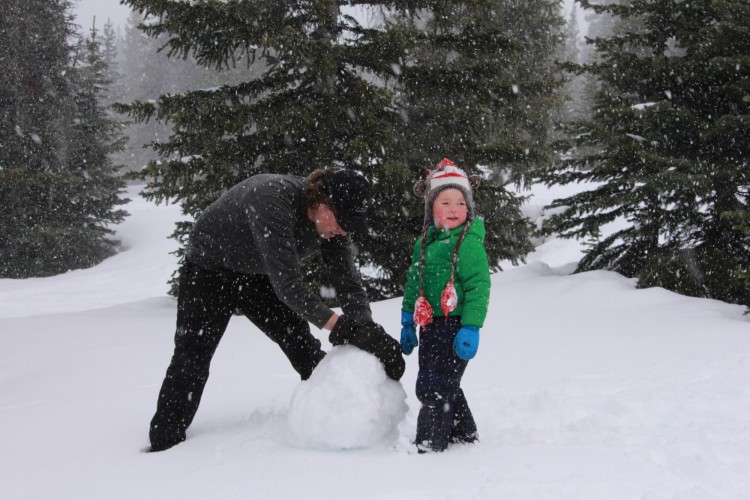
When we weren’t drying off or warming up inside the hostel, we were outside playing in the snow, working together to make a snowman. Photo: Tanya Koob
About the Hostel
The Hilda Creek Hostel is actually made up of two separate cabins situated side by side. The main cabin houses the kitchen and eating quarters with a clothesline for wet clothes. Meanwhile, the second cabin provides bunk beds for 6 people along with basic mattresses and pillows.
Travelers need to bring their own sleeping bags as there is no custodian or manager on duty at this hostel to do laundry. It’s a wilderness hostel in its utmost simplicity. You’ll find outhouses down the path from the sleeping cabin and a creek a little further away to use for drinking water and cooking.
We’ve stayed at Hilda Creek before and always love the fact that we are completely off the grid here. It was the perfect stay for a snowshoe weekend near the Icefields Parkway. No internet, no cell coverage, no running water or electricity, and no amenities for miles! I’ve always loved these words on the HI Canada website: “This hostel is not staffed, has limited services, and is accessible only by a key access system. Not for the faint of heart, hostelling here requires knowledge and application of backcountry hut procedures and ethics.”
When we weren’t drying off or warming up, we were outside playing in the snow, working together to make a snowman, and sliding down the toboggan hill located immediately outside the kitchen door. It was pure paradise, and the kids had a blast at their winter camping house. We only stayed a night, but we made full advantage of the snowy wonderland and had the snowsuits on bright and early again the next morning before packing our gear out and locking up behind us.
For us and our kids, it was a very safe and controlled version of winter camping. We slept and ate in warm propane-heated cabins, had propane-fueled lanterns and a stove at our disposal, a dry place to retreat and hang wet clothes, and comfortable beds to crawl into at the end of the day. I’ll personally take that any day over the real deal of winter camping in the snow.
When we weren’t drying off or warming up, we were outside playing in the snow. We worked together to make a snowman and slid down the toboggan hill located immediately outside the kitchen door. It was pure paradise, and the kids had a blast at their winter camping house. We only stayed a night, but we made full advantage of the snowy wonderland. But, we had the snowsuits on bright and early again the next morning before packing our gear out and locking up behind us.
For more information on Hilda Creek or hostelling in the Canadian Rockies, visit the Hostelling International website. There are five choices for wilderness hostels on Highway 93 (the Icefields Parkway) and five additional wilderness hostels located throughout Alberta and BC. Each hostel makes an ideal basecamp for ski or snowshoe adventures in winter or hiking and climbing trips in summer.
Read More: 5 Things to Do with Snowshoes that Aren’t (Exactly) Snowshoeing
Hike to the Athabasca Glacier
It was considerably sunnier on our departure day. So, we decided to do another hike before heading back to the city. We chose to hike to the toe of the Athabasca Glacier at the Columbia Icefields Discovery Centre a few miles down the road.
The Centre is your starting point for glacier tours in giant snow coaches and opens mid to late April every year. We had the opportunity to take one of the tours to the Athabasca Glacier last fall.
However, this time we wouldn’t be stepping onto the actual ice. We just wanted to hike up to the glacier, have lunch, and take in the breathtaking views of 11,000-foot (3350 m) peaks towering over us.
We towed the kids in sleds and climbed our way up a viewpoint looking down at the glacier. The Athabasca Glacier is impressive in its own right, but what you can’t see is the mighty Columbia Icefields above. At 126 square miles (203 km), it is the largest Icefield in the interior of North America. Someday, I will embrace winter camping just to get on top of the massive sheet of ice and climb up some of the easy peaks.
The hike was less than two miles (3.2 km) in distance return, and we could have done it without snowshoes. There would have been some post-holing, but we could have made it in boots. We chose to snowshoe, however, because it meant the kids could ride. Happy kids make for happy parents in the long run.
The glacier just looked like a giant field of snow with the ice covered up by the winter drifts. But I still enjoyed the hike without the crowds. As with Peyto Lake, it was nice to enjoy a popular summer hike in peace. We met very few other people on the trail and cherished this experience.
Read More: It’s Still Snowshoe Season in the Canadian Rockies
More Snowshoeing near Icefields Parkway
For us, this was the end of our trip. But, if you’d like to explore other hikes and snowshoe outings on your weekend trip to the Icefields Parkway, there are a few other great trails.
While we chose to do easy snowshoe hikes, trips of a more challenging nature are plentiful along the parkway. For example, Helen Lake, Cirque Peak, and other day hikes beckon adventurers wanting to navigate through moderate-advanced terrain. Backcountry knowledge, along with avalanche safety training, are both necessary on these routes.
Read More: Why All Snowshoers Should Be Avalanche Aware (Even Beginners)
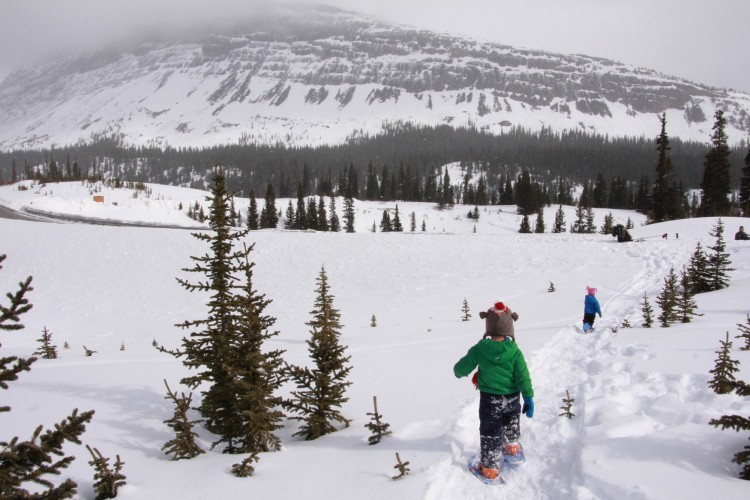
In addition to the easy hikes mentioned above, there are several other hikes in the area you can try. Photo: Tanya Koob
Additional Information
When driving the Icefields Parkway for your weekend snowshoe adventure, keep these facts in mind:
- Road maintenance is closed daily between 3 pm and 7 am
- The parkway is not salted but rather is left maintained as a compact snow surface
- There is no cell coverage on the Parkway
- There is no gas available on the Parkway
- Expect delays of up to three days after heavy snowfalls as road crews clear the highway of snow and avalanche debris.
- The road is often rated as poor throughout much of the winter season. Thus, it is heavily advised that you have a 4-wheel drive vehicle with snow tires. (I’ve seen small cars pushing snow with their bumper before on this road)
For more information on snowshoeing the Icefields Parkway, you can grab a copy of Andrew Nugara’s book Snowshoeing in the Canadian Rockies. It should be the first book you buy if you are planning a winter vacation for snowshoeing in Banff National Park.
Alternatively, families or novice winter adventurers may want to start with Nugara’s Beginner’s Guide to Snowshoeing in the Canadian Rockies. It has given us many great suggestions for trails over the next many years as a family.
What other suggestions do you have for a weekend snowshoe outing on the Icefields Parkway? Please share your thoughts with us in the comments below.
Disclaimer: Hostelling International graciously sponsored my family’s trip in this story. As always, all thoughts and opinions are entirely my own. This article was originally published on April 16, 2013. Susan Wowk completed the most recent update on March 30, 2021.
Read Next:
Snowshoeing in Jasper National Park
Easy Ways to Stay Overnight in the Backcountry as a Family in the Canadian Rockies
Following the Footsteps of a Dying Glacier: Snowshoeing in Portage, AK
10 Snowshoe Adventures to Try this Winter in the Canadian Rockies

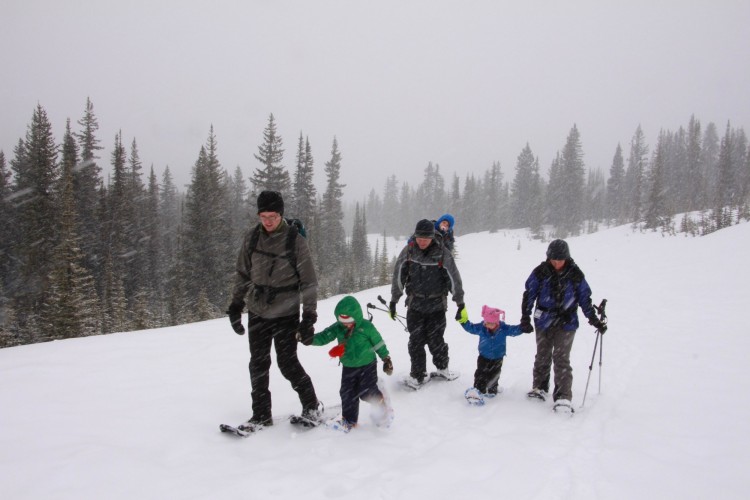
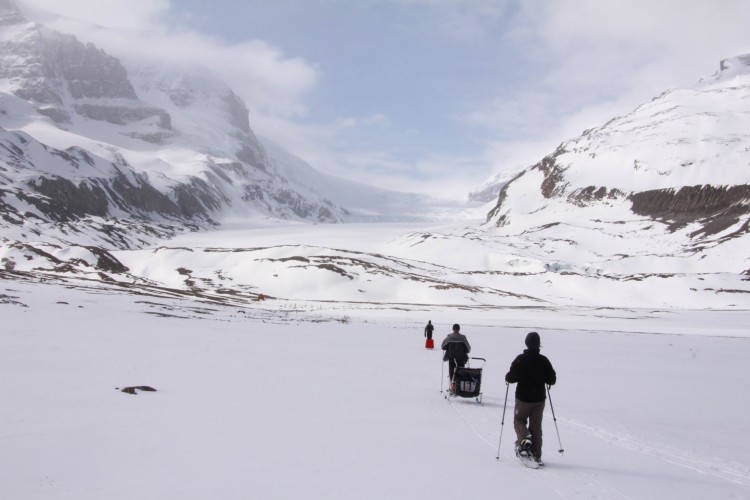
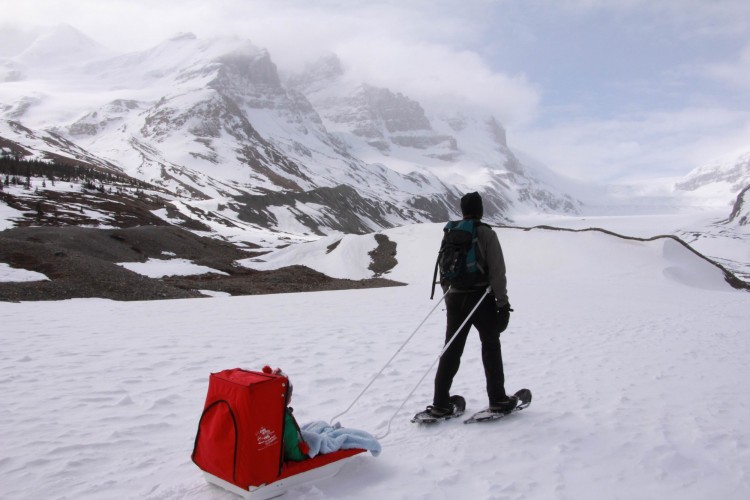
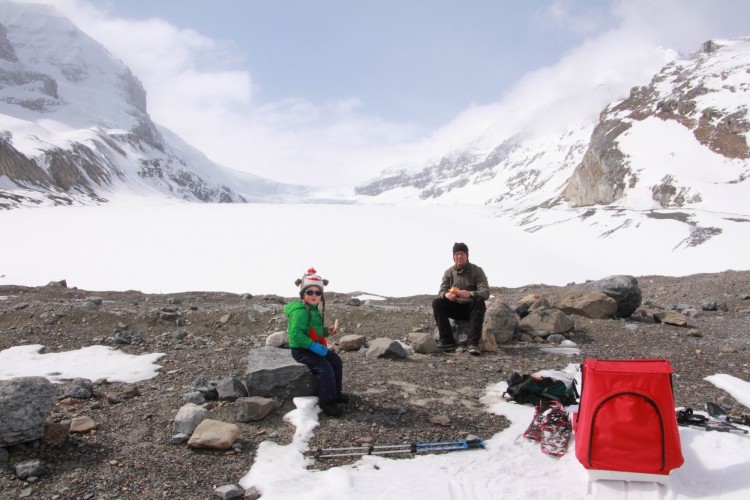
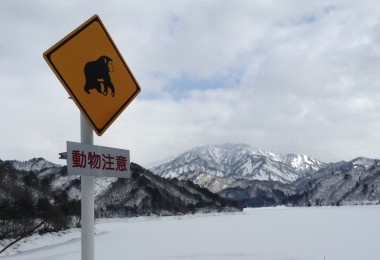
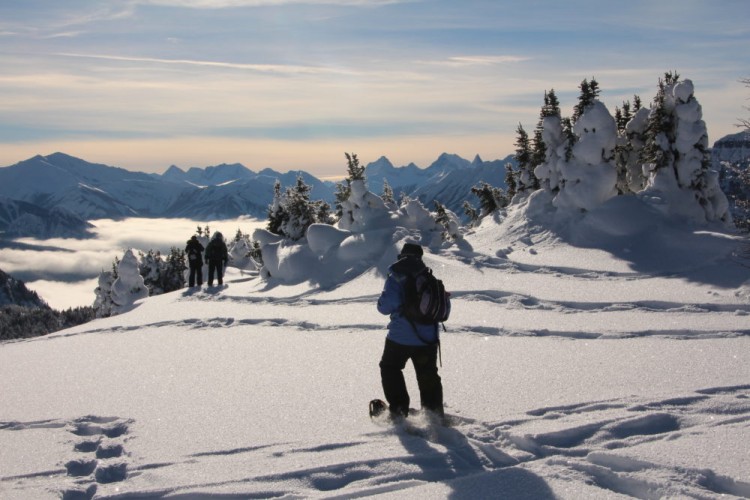
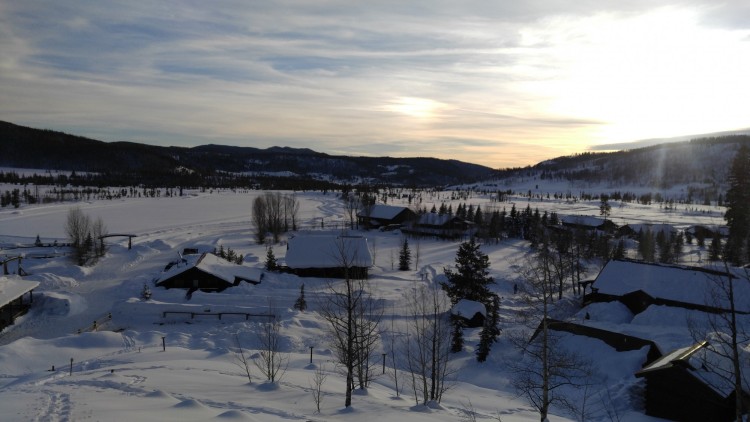
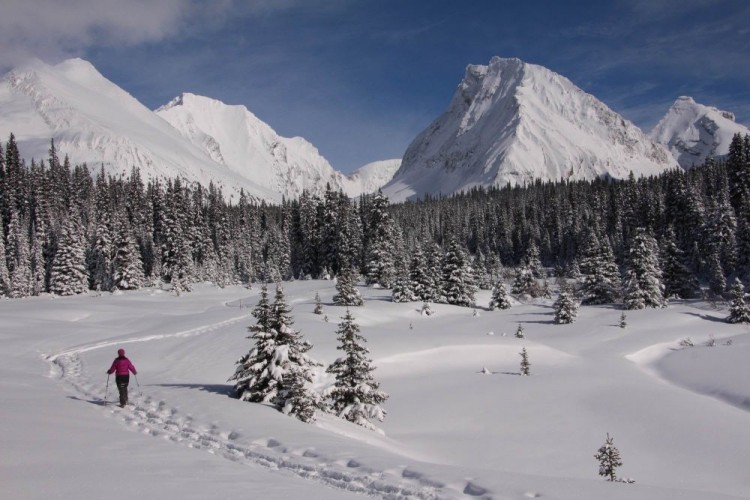

Leave a Comment